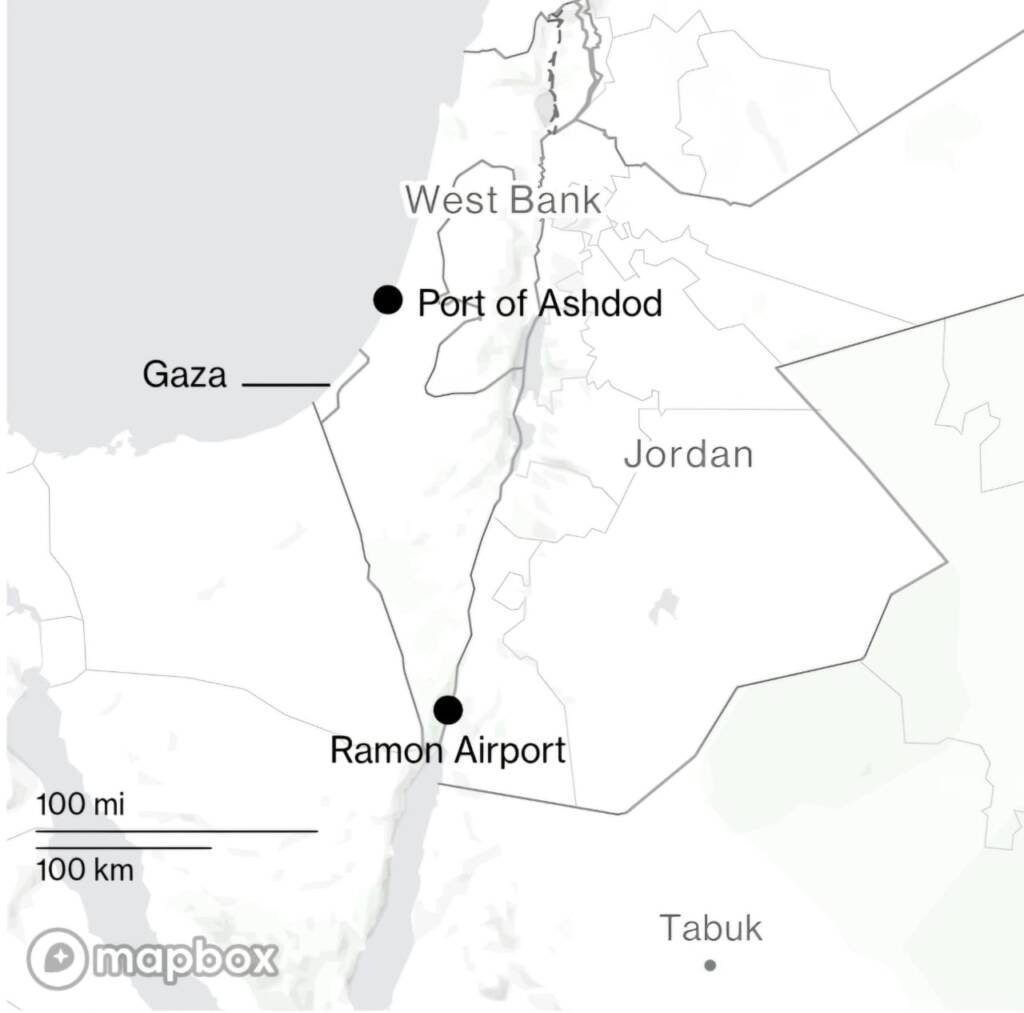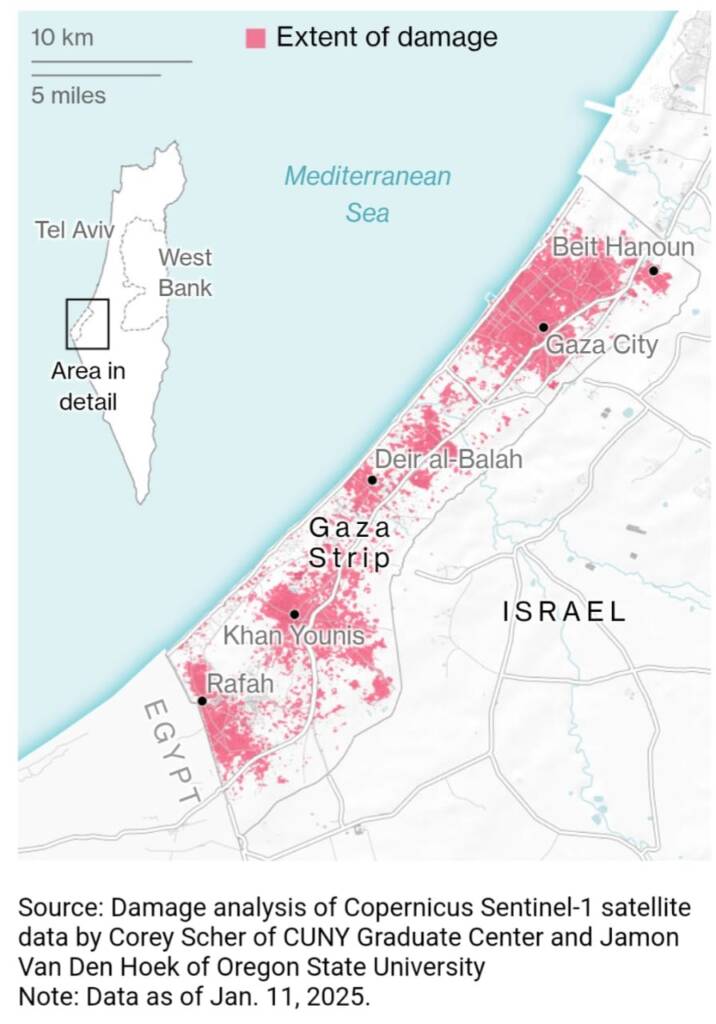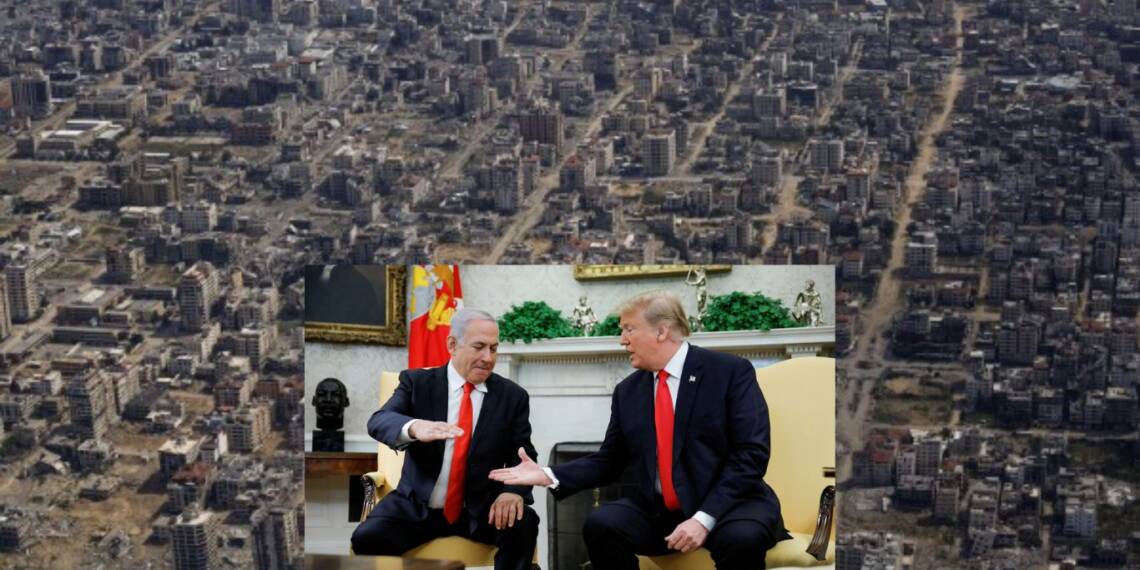Israel has identified an airport and a seaport as potential points for Palestinians to exit war-ravaged Gaza. Defense Minister Israel Katz presented a draft plan this week. This plan aligns with US President Donald Trump’s aspirational proposal to facilitate the removal of over two million Gaza residents in order to pave the way for US-led reconstruction. However, the suggestion has been met with sharp rejection from Palestinian and West Asian nations, as well as several Western governments. The US administration also looked soft after Prump’s proposal and said the US resources, such as money and military, would not be used in reconstruction.
During a military briefing on Thursday, Katz directed the Israel Defense Forces (IDF) to formulate a road map to implement Trump’s proposal. Despite scepticism regarding its feasibility and the unclear willingness of Palestinians to relocate, the IDF is now determining which of the five land crossings between Gaza and Israel would be used for the safe passage of Palestinians following security vetting. Israeli leaders are spreading and pushing the idea of relocation further.
According to an Israeli official who requested anonymity, Palestinians would be transported by bus to Ramon Airport—an international hub approximately 250 kilometres (155 miles) away in Israel’s southern desert—or to the Ashdod seaport, an hour’s drive up the Mediterranean coast. Coordination of Government Activities in the Territories (COGAT), the Israeli Defense Ministry agency responsible for planning, has declined to comment on the discussions.

Political Reactions and Public Sentiment on Gaza Plan
The proposal was first discussed when Israeli Prime Minister Benjamin Netanyahu’s visit to the White House. While many members of Israeli politics welcomed it, thinking that it might help harden the six-week ceasefire by Hamas, scepticism dominates public opinion. A Channel 12 TV poll showed that 69% support Trump’s proposition, 18% oppose it, while only 36% think it can be carried out. Half thought it is completely unworkable.
Israel’s director of military intelligence, Major-General Shlomi Binder, gave a warning that the displacement plan would likely increase the violence in the West Bank. His caution was publicly rebuked, thus underscoring the political sensitivities surrounding this initiative. Israel’s Defense Minister Katz dismissed the concerns, asserting that “no reality exists in which IDF officers will speak out against US President Trump’s important plan regarding Gaza.”
Regional and International Concerns
A major obstacle to the plan’s success is the stance of Egypt, which has categorically refused to accept Palestinian refugees. Trump had previously asked that Egypt and Jordan to host the displaced Gazans. However, both nations have rejected the idea for now. But may change after Trump’s pressure. Egypt’s government has expressed concerns that such a move could undermine the ceasefire and destabilize regional security. Jordan’s King Abdullah II has also firmly opposed the idea, reiterating that “Jordan is for Jordanians, and Palestine is for Palestinians.” Jordan is ready to go to war against Israel, but the US base in Jordan complicates the matter.
Logistical Challenges and the State of Gaza
Gaza has suffered immense destruction due to the ongoing conflict, which began on October 7, 2023, when Hamas militants launched a deadly attack on Israel, killing 1,200 people and taking 250 hostages. Israel’s retaliatory campaign has led to over 47,000 deaths in Gaza, as per figures from the Hamas-run health ministry. Satellite imagery analysis indicates that nearly 60% of Gaza’s buildings have been damaged or destroyed, leaving the majority of its population displaced within the enclave.

Despite these conditions, the extent to which Palestinians would be willing to leave remains uncertain. Before the war, surveys suggested that at least one-third of Gazans expressed a desire to relocate for a better future. However, no recent polling has been conducted to gauge sentiment since the onset of the conflict. But one thing is clear: few Gazans who want to live a good life out of fear and violence will get a life-saving option to make their life better.
Also Read: Trump plans to take over Gaza permanently
The US Position and Future Prospects
Following the international backlash, Trump administration officials have sought to downplay the proposal, suggesting that any relocations would be temporary while Gaza undergoes reconstruction. Secretary of State Marco Rubio has stated that Palestinians would be housed “somewhere else in the interim,” though details remain sparse.
While Trump insists that Palestinians would be resettled in “far safer and more beautiful communities, with new and modern homes,” critics argue that the plan lacks viability and fails to account for the political, cultural, and humanitarian ramifications of such a displacement.
With continued resistance from Palestinian leaders and the broader international community, the likelihood of this plan’s successful execution remains highly uncertain. Meanwhile, the ceasefire holds, and negotiations continue, but the path forward remains fraught with complexities and opposition.
Several countries are-iterated the age old prospect of a two-state solution, which now looks distant. After a devasting war and now with the pressure from the Trump administration, the possibility of a two-state solution looks to be binned.








